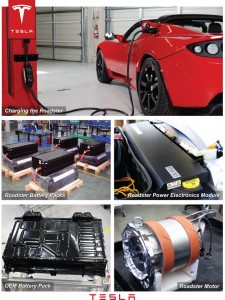Energy efficiency, renewable energy, and information technology are all helping the U.S. overcome a severe recession and keep more people from losing their jobs. From our San Francisco roof deck, I am encouraged to see energy efficient homes, solar roofs, and electric buses gliding by. I am also discouraged to see massive ships from Asia sail into the harbor ladened with hundreds of rail cars full of Asian goods, then leave for distant customers with much lighter loads.
As trillion dollar industries are disrupted, he stakes are high for jobs and economies. The U.S. can win or lose in a future that includes energy efficient materials, LED lights, electric cars, high-speed rail, wind power, solar power, smart grids and smart apps.
Clean Tech Job Trends 2010 Details U.S. Growth
As the economy officially pulls out of The Great Recession, clean energy continues to fuel the plans of many cities, states, nations, investors, and companies as they look for the next wave of innovation and growth. In its second annual look at the state of clean-tech jobs in the U.S. and globally, Clean Edge published its Clean Tech Job Trends 2010. The report looks beyond green job evangelism to provide key insights and a sober analysis of the most important employment trends globally. I was particularly interested in my home state; cleantech is particularly important to California’s economic future. The Report states:
“Not surprisingly, the San Francisco Bay Area/Silicon Valley repeats as the top area for cleantech jobs, with Los Angeles second. Even in its challenging economic times, California continues to see fairly robust job activity in clean-tech startups and established players, with the state’s high-tech giants like Cisco, Intel, and Google aggressively expanding their smart-grid initiatives. San Diego (seventh) and Sacramento (15th) give California four cities in the Top 15, but the Golden State faces an uncertain clean-tech future if the state’s voters pass a November ballot measure, Proposition 23, that would suspend the state’s landmark greenhouse gas reduction laws.”
Tesla Motors provides a good example of job creation. In 2012, it plans to reopen a shuttered plant owned that was owned by a Toyota – General Motors JV. The plant will create about 1,000 jobs as two exciting new electric vehicles roll-out: the Tesla Model S premium sedan with a electric range that far exceeds the Nissan LEAF and Ford Focus Electric; and the new Toyota RAV4 EV, long an SUV favorite of EV enthusiasts. In the new world of global “co-opetition,” Tesla is 2% owned by Toyota and 5% owned by Daimler. The two auto giants admire Tesla’s innovation, first to market speed, and battery-pack technology.
Northern California is also rich with smart grid leaders including Silver Spring Networks, Cisco, and EPRI. Solar energy innovators abound including Bright Source, Sun Power, and MiaSole.
Southern California is rich innovators making gasoline and diesel not with petroleum, but with algae, waste, and cellulose. In San Diego’s biotech research center, surrounding the University of California at San Diego and the Salk Institute are over 40 companies working on biofuels from algae. Sapphire Energy and Synthetic Genomics both have received over $100 billion from private equity investors to expand their research and production of algal fuels.
These are a few examples from my home state of California. The Clean Edge report covers exciting opportunities nationwide, the dynamics of U.S. – China competition, and 3 million jobs globally in a variety of billion dollar cleantech sectors. Clean Tech Job Trends 2010 is recommended reading for everyone. The free report can be downloaded at www.cleanedge.com.

